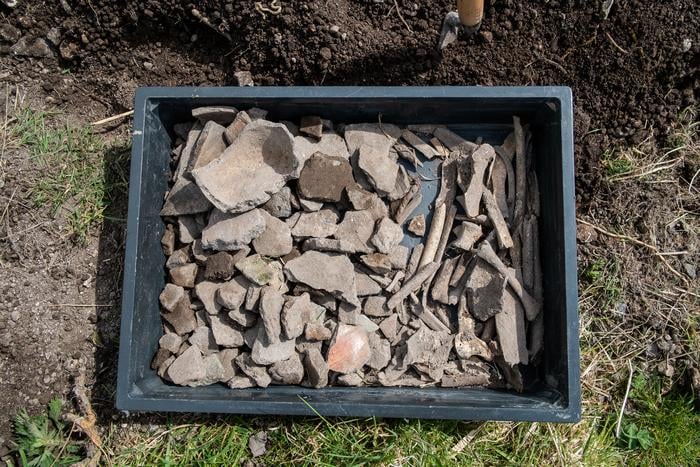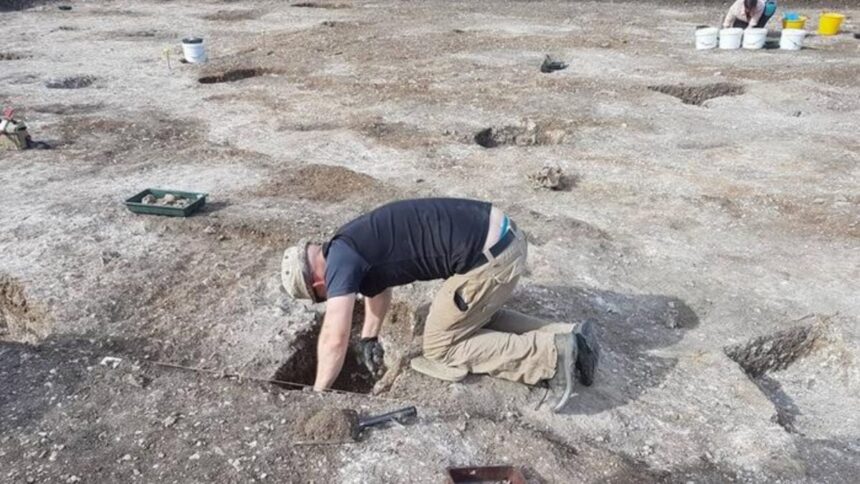You can learn a lot about people by studying their trash, including populations that lived thousands of years ago.
In what the team calls the “largest study of its kind,” researchers applied this principle to Britain’s iconic middens, or giant prehistoric trash (excuse me, rubbish) piles. Their analysis revealed that at the end of the Bronze Age (2,300 to 800 BCE), people—and their animals—traveled from far to feast together.
“At a time of climatic and economic instability, people in southern Britain turned to feasting—there was perhaps a feasting age between the Bronze and Iron Age,” Richard Madgwick, an archaeologist at Cardiff University and co-author of the study published yesterday in the journal iScience, said in a university statement. “These events are powerful for building and consolidating relationships both within and between communities, today and in the past.”
Origin of butchered animals
Madgwick and his colleagues investigated material from six middens in Wiltshire and the Thames Valley via isotope analysis, a technique archaeologists use to link animal remains to the unique chemical make-up of a particular geographic area. The technique reveals where the animals were raised, allowing the researchers to see how far people traveled to join these feasts.
“The scale of these accumulations of debris and their wide catchment is astonishing and points to communal consumption and social mobilisation on a scale that is arguably unparalleled in British prehistory,” Madgwick added.
A particularly large midden, from Wiltshire’s village of Potterne, stretches across around five football pitches worth of area (this is the UK, so they probably mean soccer fields) and includes up to 15 million bone remains. The researcher’s analysis revealed that here, pork was preferred, with one or more specimens coming all the way from northern England. Nonetheless, the animals came from several areas, indicating that the Potterne location was a place of gathering for both local and distant producers.
The team found that Runnymede in Surrey was similarly also a large regional center, though cattle were the animals that made the long journey there. On the other hand, the estimated remains of hundreds of thousands of animals in a mound in East Chisenbury, just 10 miles (16 kilometers) from Stonehenge, were mostly sheep. What’s more, the researchers noted that the majority of the East Chisenbury animals were local.

“Our findings show each midden had a distinct make up of animal remains, with some full of locally raised sheep and others with pigs or cattle from far and wide,” said Carmen Esposito, lead author of the study and an archaeologist at the University of Bologna. “We believe this demonstrates that each midden was a lynchpin in the landscape, key to sustaining specific regional economies, expressing identities and sustaining relations between communities during this turbulent period, when the value of bronze dropped and people turned to farming instead.”
A number of these prehistoric trash heaps, which resulted from potentially the largest feasts in Britain until the Middle Ages (that would mean they even outdid the Romans), were eventually incorporated into the landscape as small hills.
“Overall, the research points to the dynamic networks that were anchored on feasting events during this period and the different, perhaps complementary, roles that each midden had at the Bronze Age-Iron Age transition,” Madgwick concluded.
Since previous research indicates that Late Neolithic (2,800 BCE to 2,400 BCE) communities in Britain were also organizing feasts that attracted guests—and their pigs—from far and wide, I think it’s fair to say that prehistoric British people were throwing successful ragers across 2,000 years.
Read the full article here












